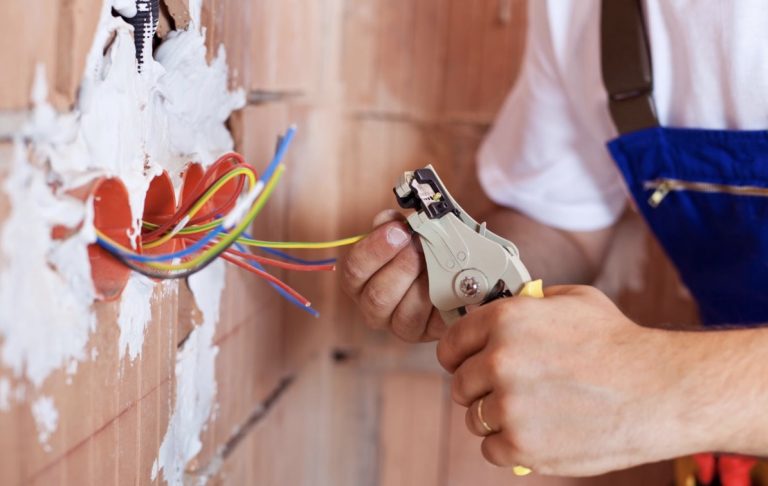Australia is a land of beautiful homes that represent a blend of heritage, architecture, and contemporary style. But every home, irrespective of its aesthetic charm, relies significantly on its internal systems to ensure that it’s safe and livable. Of these, perhaps the most critical is the electrical system. This guide is an attempt to create a detailed understanding of when a house requires rewiring. We will address the importance of a well-structured electrical system, the ageing of infrastructure over time, and the conditions that necessitate the rewiring of a home.
Story Stages
A Step-by-step Analysis of the Electrical System in a Home
To create a comprehensive understanding of house rewiring, let us start from scratch and understand the fundamental structure of a home electrical system. It is a fascinating mesh of wires, connections, switches and power outlets that crisscross through your home, providing energy to run appliances and ensuring that your living spaces are well-lit, comfortable and safe.
To a layperson, this system may seem like a jungle of wires. However, it’s a brilliantly designed system that ensures efficient delivery of electrical energy. The system typically includes switchboards, circuit breakers or consumer units, wiring that winds its way through your home, and the switches, power outlets, and light fittings that we typically see in our living spaces. Each element of this system has an expiration date, depending on usage, quality, and type. Therefore, homeowners must have a decent knowledge of their home’s electrical system so they can detect when an upgrade or full rewiring becomes necessary.
The Age of Your Home Spectrum
Everything ages—including your home and the systems within it. Over the years, as your house becomes home to memories, its structure also hosts age-related issues. These issues can range from foundational concerns to wear and tear of operational systems like plumbing, heating, or electrical setups.
However, even if you’re living in an older house, it does not necessarily mean that your electrical system is not up to par. Many old homes have been upgraded over time to meet the safety and functionality standards set by Australia’s stringent codes. However, if you’re moving into a heritage house or have a home that hasn’t been touched in decades, there’s a possibility that your electrical system may be outdated. In these cases, you need to understand the importance of rewiring a home to ensure that it adheres to safety and operational requirements.
Warning Signs That Your Home’s Electrical System Needs Attention
Understanding the warning signs of an ageing electrical system is crucial for homeowners. While an electrical system may often age subtly, signs will eventually emerge that demand your attention. Warning signs could include electrical shocks when you touch appliances or switch them on, a constant or frequent tripping of circuit breakers, dimming or flickering lights, burn or char marks around your home’s outlets, buzzing sounds from switches, or an unexplained increase in your electrical consumption.
However, these signs might merely be the tip of the iceberg, highlighting bigger, underlying problems. If you notice any of these signs, it’s highly advisable to consult a professional electrician to investigate whether they’re symptoms of a more significant issue that needs addressing. Stubbornly ignoring these signs could eventually lead to compromised safety or excessive energy consumption, both of which have far-reaching implications.
Dangers Lurking Underneath Ignored Signs
Neglecting the warning signs of an ageing electrical system could turn out to be detrimental. An outdated electrical system that needs rewiring might be a ticking time bomb, hiding the risk of electrical fires, serious damage to appliances, or harm to the house’s residents due to erratic operation or electric shocks.
Moreover, an outdated electrical setup may compromise the efficient distribution of energy in your home leading to a significant increase in electrical bills. Therefore, to keep your home and loved ones safe, and to ensure efficient energy use, homeowners should never avoid or delay any rewiring their homes may need.
The Vital Role of Professional Electricians in House Rewiring

House rewiring is not a DIY hobby project that you should undertake on a sunny Sunday. It is a task that requires understanding, skill, experience, and above all, application of safety standards. Thus, always engage a skilled, experienced, and certified professional electrician for any rewiring or upgrade work. They will identify the risks, evaluate the condition of your electrical setup, and if necessary, undertake the extensive and important task of rewiring your home. It’s important to remember that while cost and proximity are relevant considerations, choosing an electrician based on their professional credentials, customer feedback and industry reputation takes precedence.
Conclusion
Understanding when your house needs rewiring is integral to maintaining a safe and energy-efficient home. Knowledge about ageing symptoms of your electrical system, the warning signs of potential risks, and the repercussions of ignoring these signs equips you to follow a better-prepared approach towards managing your property’s electrical integrity. Regular checks and routine maintenance can help you nip potential electrical problems in the bud before escalating to catastrophic failures. Nevertheless, when home rewiring becomes essential, count on a trusted, certified electrician to handle the task. By doing this, you are ensuring the safety, efficiency and longevity of your home’s electrical circuitry and contributing to a safer, happier living environment for many years to come
